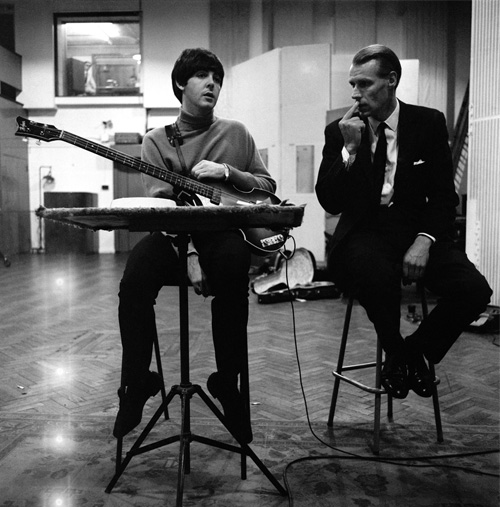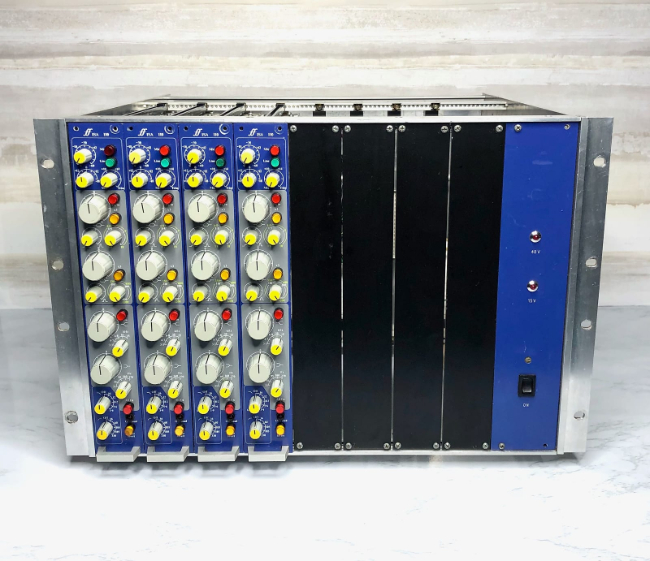Picture this: Your friend is working on their new EP and asks if you’ll come over to record in their bedroom studio. You happily oblige, grab your gear and head out. When you arrive you’ll notice a few familiar sights—perhaps there’s a shelf full of records, or a stray guitar leaning on the arm of a futon. In their carved out recording space, you’ll likely find a bed, maybe some strewn laundry, but almost definitely some sort of MIDI controller and a computer. Chances are, you’ll recognize a rectangular scarlet chassis on the desk somewhere, the unmistakable framework of Focusrite’s Scarlett 2i2 USB interface.
Every beginner, moderate, and professional musician who has at-home recording capabilities uses an audio interface, and the vast majority of those probably own a Scarlett. In fact, Focusrite claims that the Scarlett 2i2, their highest selling model, has “already helped make more records than any other interface in history.” It’s a bold, yet doubtlessly factual statement.
Since the launch of the Scarlett USB interfaces in 2010, Focusrite has been at the forefront of the home and studio hardware market, and there’s no mistaking why: Scarlett interfaces are a steal for the service they provide. Focusrite preamps are some of the most prestigious and well constructed ever made. It’s literally what their entire heritage is built on.
But you don’t need a puff piece to wax poetic on the power of Scarlett interfaces. You probably already know that. What I’m here to tell you is that your friend’s Scarlett 2i2 on their desk boasts a lineage similar to that of a chicken or a lizard—if you trace back its history, you’ll find that its ancestors were once giants, titans of their kind, unable to be harnessed by the average pedestrian.
What you probably don’t know, however, is how the auspicious and formidable beginnings of Focusrite were spearheaded by two of the greatest innovators in music history, one of whom’s names is tattooed on the back of a bulk of the records sitting on your friend’s shelf.

Just as the unceremonious decline of The Beatles unfolded at the break of the 1970s, George Martin began expanding. The success of his proteges greatly benefitted his career as an independent record producer, and by 1970, Martin was one of the most sought-out producers in the world. It’s what led him to establish Associated Independent Recordings (AIR Studios) in 1970, Martin’s very own recording studio in central London.
In 1979, Martin expanded once more, establishing a new AIR Studio on the Caribbean island of Montserrat, where he hosted a number of world class acts through its tenure—a list that includes Elton John, Marvin Gaye, The Police, and The Rolling Stones. While the studio’s gear list boasted an impressive inventory, Martin dared to expand even further.
As Air Studios Montserrat entered its prime in 1985, Martin contracted a historic commission. Rupert Neve—the electronic engineering genius behind his quintessential Neve brand mixing, preamp, EQ, and dynamics consoles—was tasked by Martin to create a no-compromise mic preamp and EQ circuit to be installed in the studio’s mixing console (a Neve console, no less).
He called his creation the ISA 110, a comprehensive preamp built with a (now signature) Lundahl transformer and a Neve EQ circuit. It became the keystone product for which Neve founded his newest business venture upon, a boutique audio processor company he called Focusrite. The circuits within the preamp were meticulously designed, and each unit was sourced and outfitted with military-grade parts. It was built with the intention of it being the best preamp money could buy, and Martin loved the module so much that he had Neve outfit his entire mixing console in AIR Studios London exclusively with ISA 110s.
It should be noted that these original consoles were not cheap. If you were to buy a pair of ISA 110s in the late 1980s, along with the required power supply and mounting rack, they would run you upwards of $7,000 (around $22,000 today).

Sir George Martin’s early interest in the ISA 110 series led Neve to develop several other no-compromise mic preamps, including the ISA 130 and ISA 115, which served as the building blocks for the Focusrite Forte—a full recording console, and arguably his largest and most ambitious project to date. The Forte console was the most high-end console of its time, but also the most complex and expensive to produce. In the final years of the '80s, only two Focusrite Forte consoles were ever made. One was shipped to Master Rock Studios in London; the other went to Electric Lady in New York City.
But with great majesty comes great expense. The Forte console was simply too costly to produce, and Focusrite was hemorrhaging money fast. Neve was left with no choice but to sell his company and move on to another venture.
Phil Dudderidge had recently sold his company, Soundcraft, and was left projectless and with money in the bank. He stepped in to buy the majority assets of Neve’s brainchild and assembled a team of engineers and designers to reinvigorate the stagnant Focusrite brand by reimagining and redesigning the Forte console into the Focusrite Studio console.

Dudderidge maintained Neve’s ISA 110 as the studio console’s primary constituent, but vowed to produce the module more cost-effectively and with a larger market in mind. Outfitted with over 70 inputs and immense processing power, the Focusrite Studio console was a colossus, a groundbreaking module that was preeminent in its class. Focusrite, under Dudderidge’s watchful eye, managed to produce 10 of the consoles by 1990, and many of them are still in use today around the world. Arguably the most recognizable of the original 10 sits in Ocean Way Studios in Los Angeles, where charted hits recorded on that console have sold in excess of one billion copies.
It’s fair to say that the components of the Focusrite Studio console are beloved by recording engineers. Many of those who have been lucky enough to work with and study it, like analogue experts Mark Thompson and Hugh Robjohns of Funky Junk and Sound on Sound magazine respectively, praise its honest portrayal of sound and soft touch. Whereas many audio processors manipulate sound by adding or taking away certain components, the Focusrite Studio console and its ISA 110 preamps and EQ units capture sound transparently, subtly adding a slight body and texture while tastefully enhancing the colors of each frequency.
While exclusive and in very limited supply, the triumph of the studio console and the high demand for its features—mic pre, EQ, dynamics—led to the beginning of several highly successful ranges, like the ISA Range, the subsequent Blue Range of mastering products, and the Red Range in 1993, an award-winning line of analogue mic pres, EQs, and dynamics consoles that found great critical and commercial success through the decade, and is still being reissued today.
Since then, Focusrite has released numerous product lines that have gone widely commercial, including the Platinum, Saffire, Liquid, Clarrett, and of course, the Scarlett Ranges that have established Focusrite as a leader in analogue audio processors for the major consumer market.
Today, the Scarlett Range and its third generation product line dominate the interface market, but similar to the abundant chicken or garden lizard, its family tree branches out to a larger, more intimidating pedigree elsewhere in the modern world. Focusrite’s RedNet range of interfaces and preamps bear more similarities to the Studio Console than the Scarletts in both build and affordability. But much of the RedNet Range, like the RedNet MP8R preamp, is intended for larger capacity audio processing and live sound production.
Focusrite also continues to reinvent and reissue several products in the ISA Range, like the ISA 428 MKII, a mic preamp with four channels that mirrors the classic look of the ISA 110. And since acquiring Novation in 2004, Focusrite has been releasing a variety of synthesizers, keyboards, and MIDI controllers, including their own Launchpad line in 2009, further ballooning their stature as a leader in the music technology industry.
There’s a whole magnificent world behind the modest Scarlett 2i2 that sits on the desks of the countless thousands of home recordists worldwide. And unlike many products on the market today that took time and endless patience to prevail, Focusrite began with a cataclysmic bang, the product of two great minds with the intention of creating something entirely groundbreaking.
Though the beginning of the epoch was turbulent at times, the careful and clever guidance of Phil Dudderidge and his team have distilled greatness into something so humbly commonplace, you can find it nestled amongst the comforts of our own bedrooms, the culmination of a grand evolution lying in between your friend’s record shelf and the laundry basket.
Correction: An earlier version of this article stated that a single ISA 110 (along with a power supply and rack) would have cost $7,000 in the late 1980s. Instead, this would have been the cost for a pair of ISA 110s.
